FILIPPO PICCININI
Rehab Coach Isokinetic

TOM DOS SANTOS
Senior Lecturer Manchester Metropolitan University

ALBERTO FÍLTER
FSI Talks host
In our FSI Talk, we explored the persistent challenge of ACL injuries, noting how the incidence has evolved. This raises the question of whether preventing ACL injuries is a myth or reality and whether our current strategies are effective.
We discussed the key ACL risk factors, including biomechanical, anatomical, hormonal, and environmental influences. Our screening tools, the Cutting Movement Assessment Screen (C-MAS) and the Movement Analysis Test (MAT), were discussed as methods to identify high-risk individuals through evaluation of their movement patterns and physical capabilities.
A focal point of the talk was identifying the most modifiable risk factor: neuromuscular control. We also addressed the feasibility of modifying techniques in senior professional players, emphasizing that while challenging, it is possible with targeted training.
We highlighted the importance of early intervention, recommending that movement patterns be tested and modified during key developmental stages in youth sports. Incorporating the specific demands and context of each sport into prevention programs was also stressed, ensuring that players are prepared for real-game scenarios.
The discussion included the need for sport-specific screening, acknowledging differences between sports like basketball and football. Looking to the future, we expressed optimism about the role of virtual reality in enhancing ACL injury risk assessments and creating more effective, personalized prevention programs.
© Football Science Institute | Privacy Policy | Terms & Conditions | Design and development OAK Producciones


